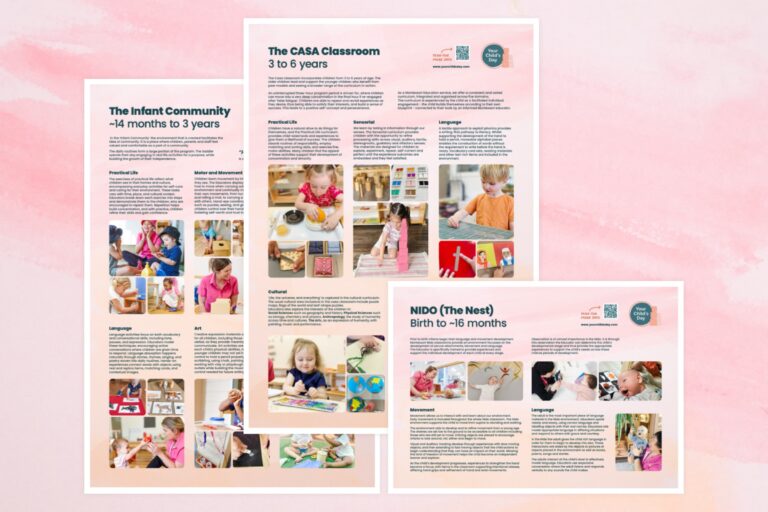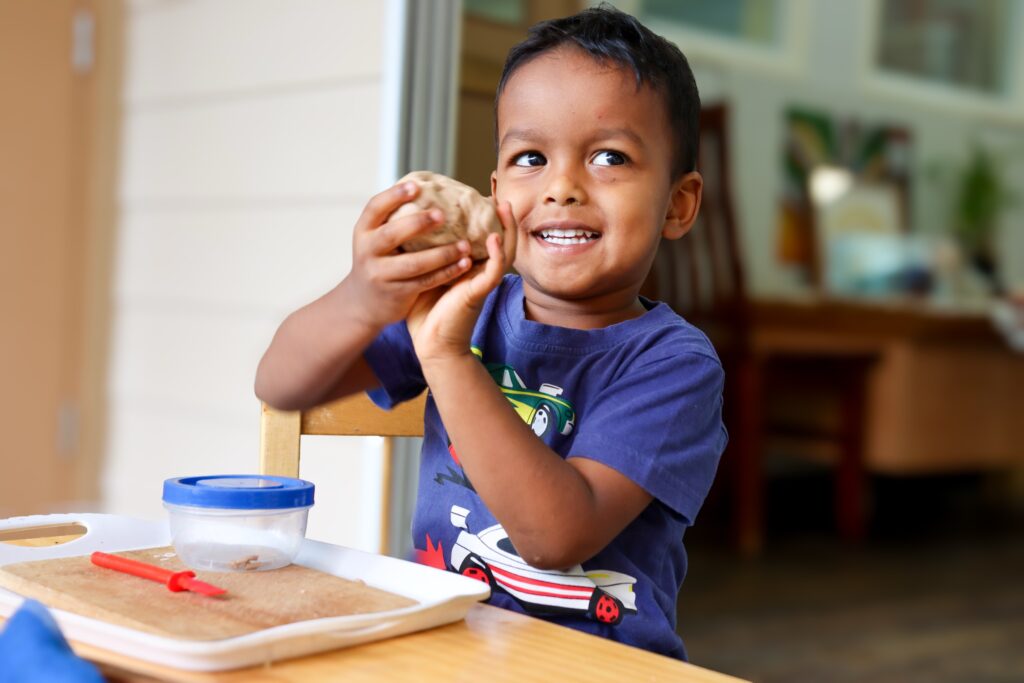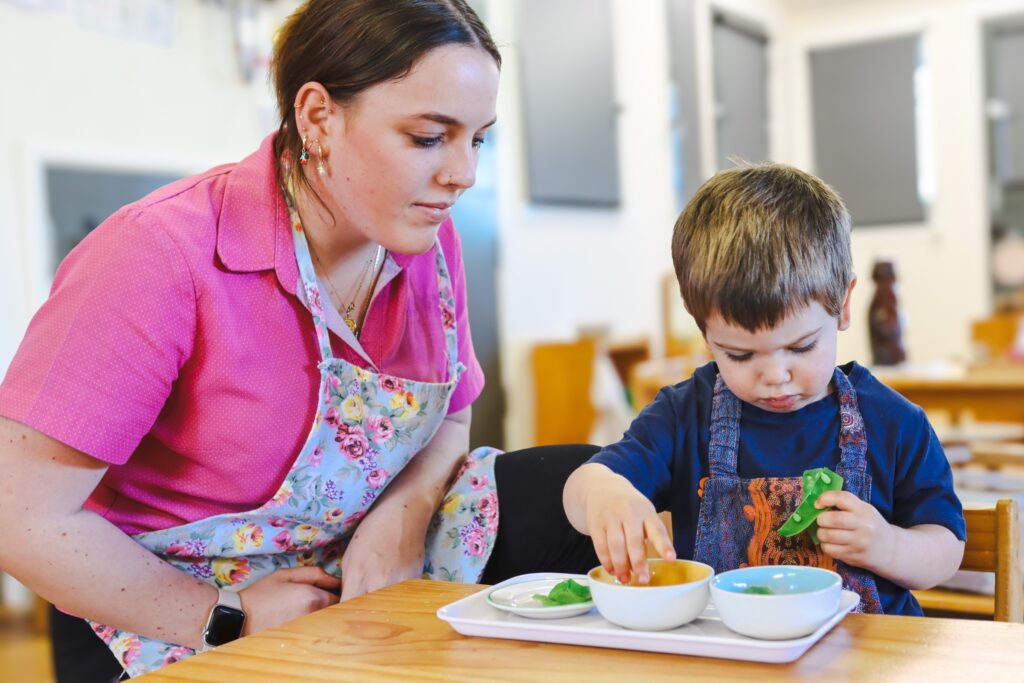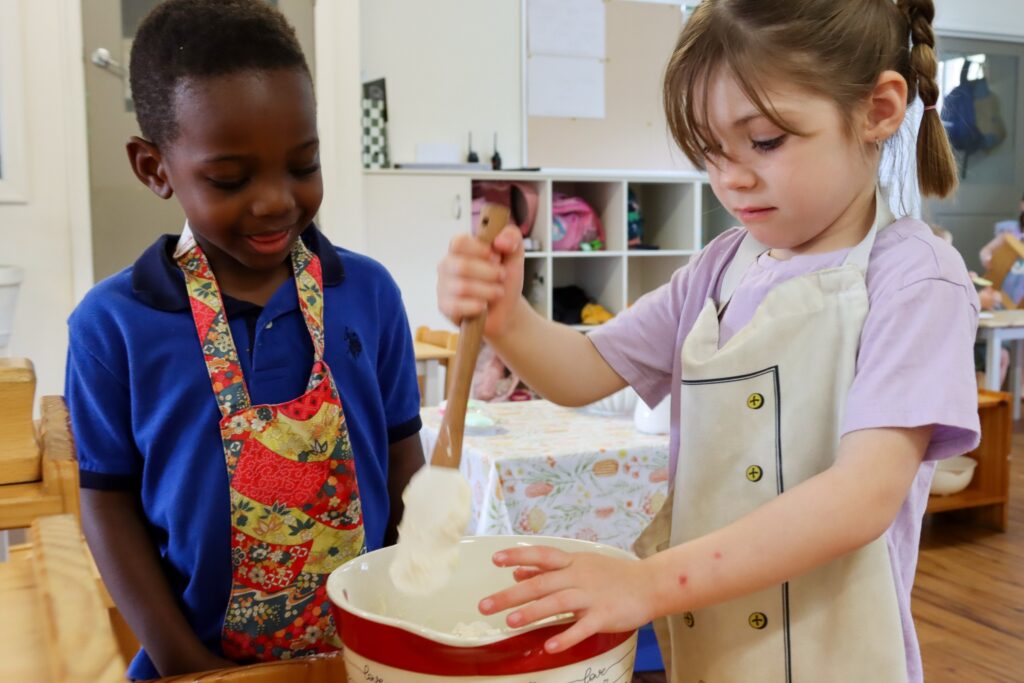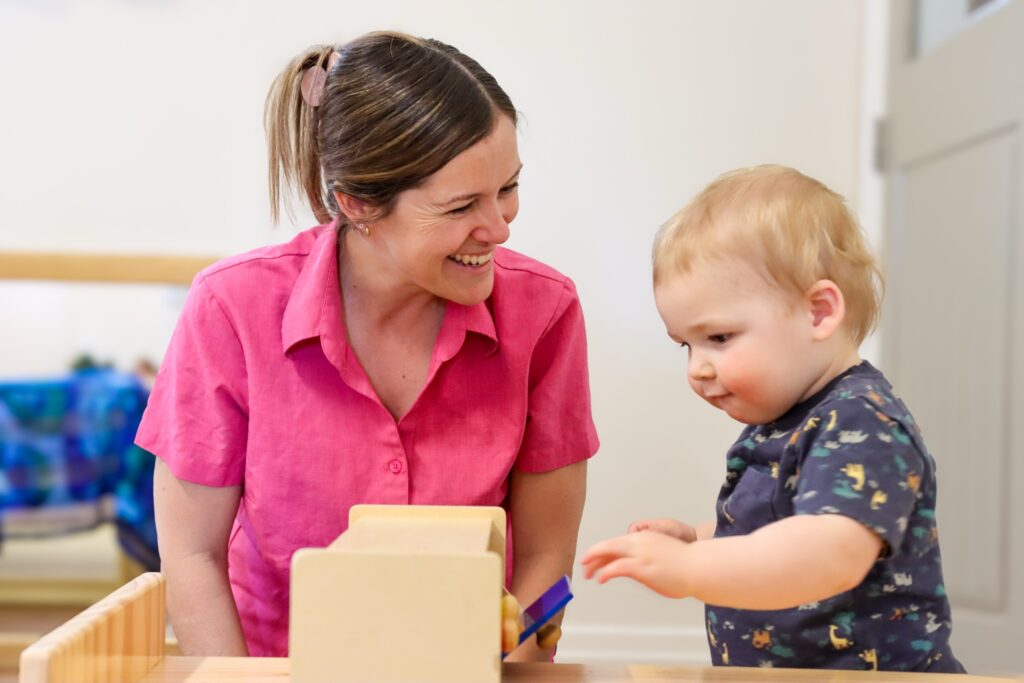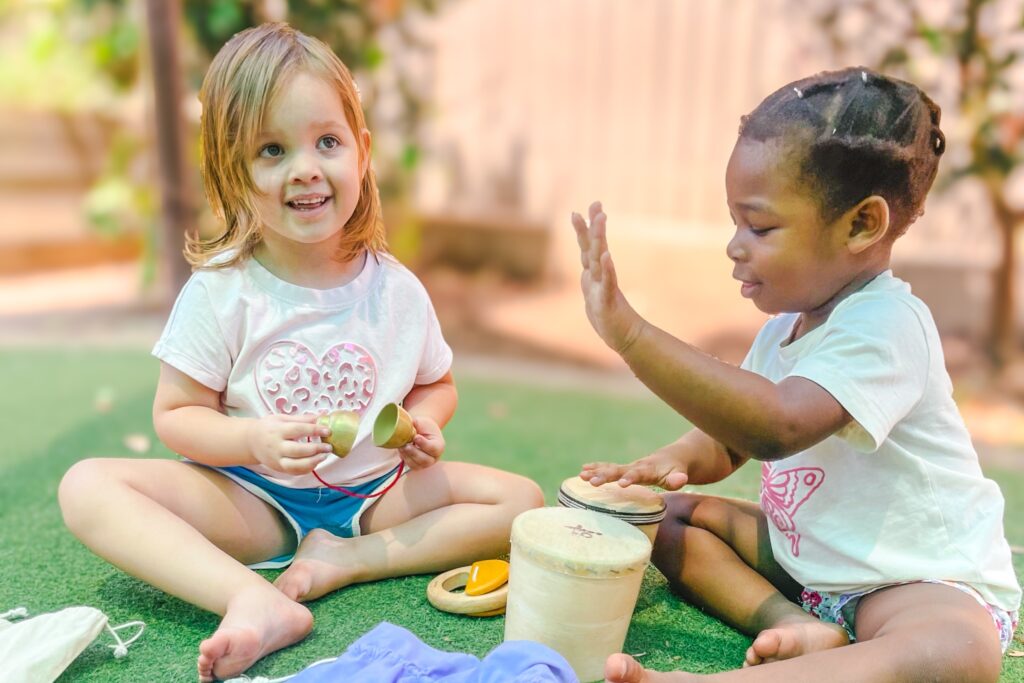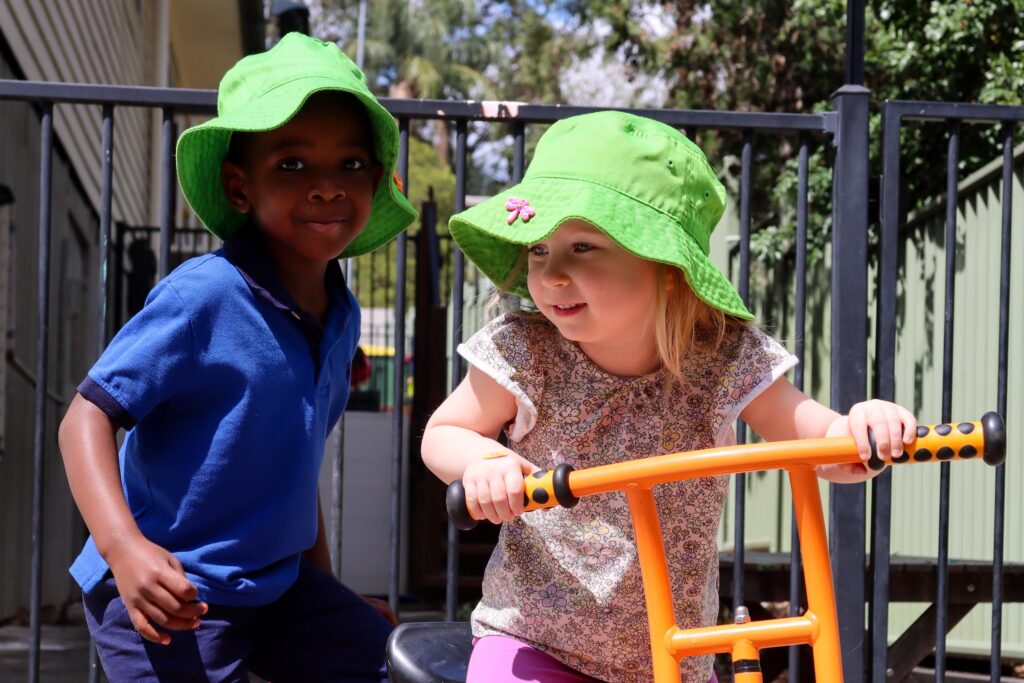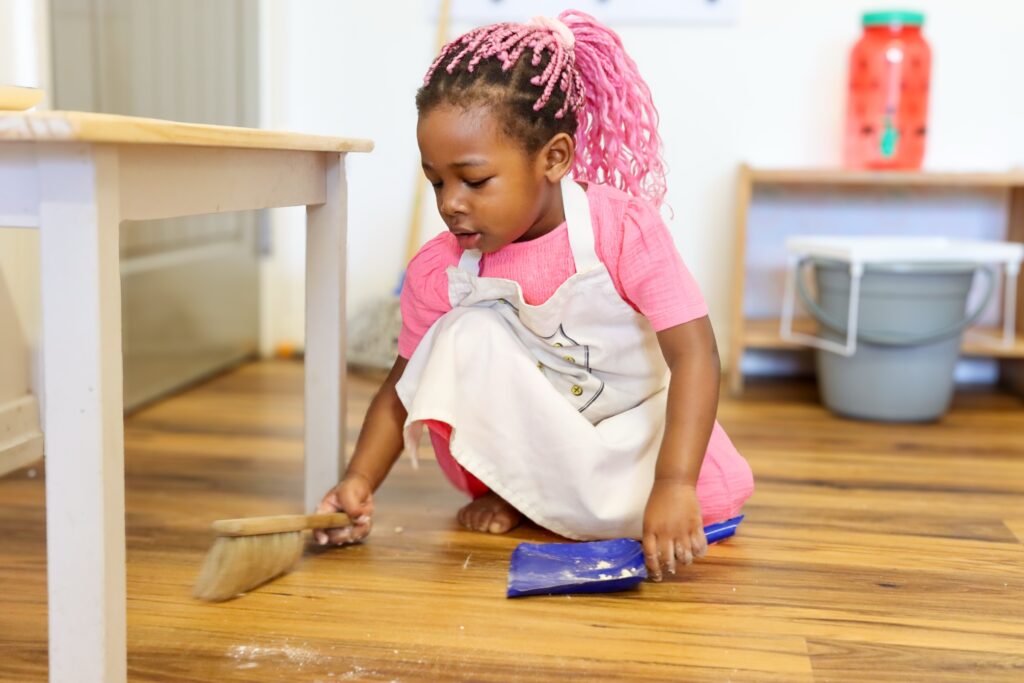Language
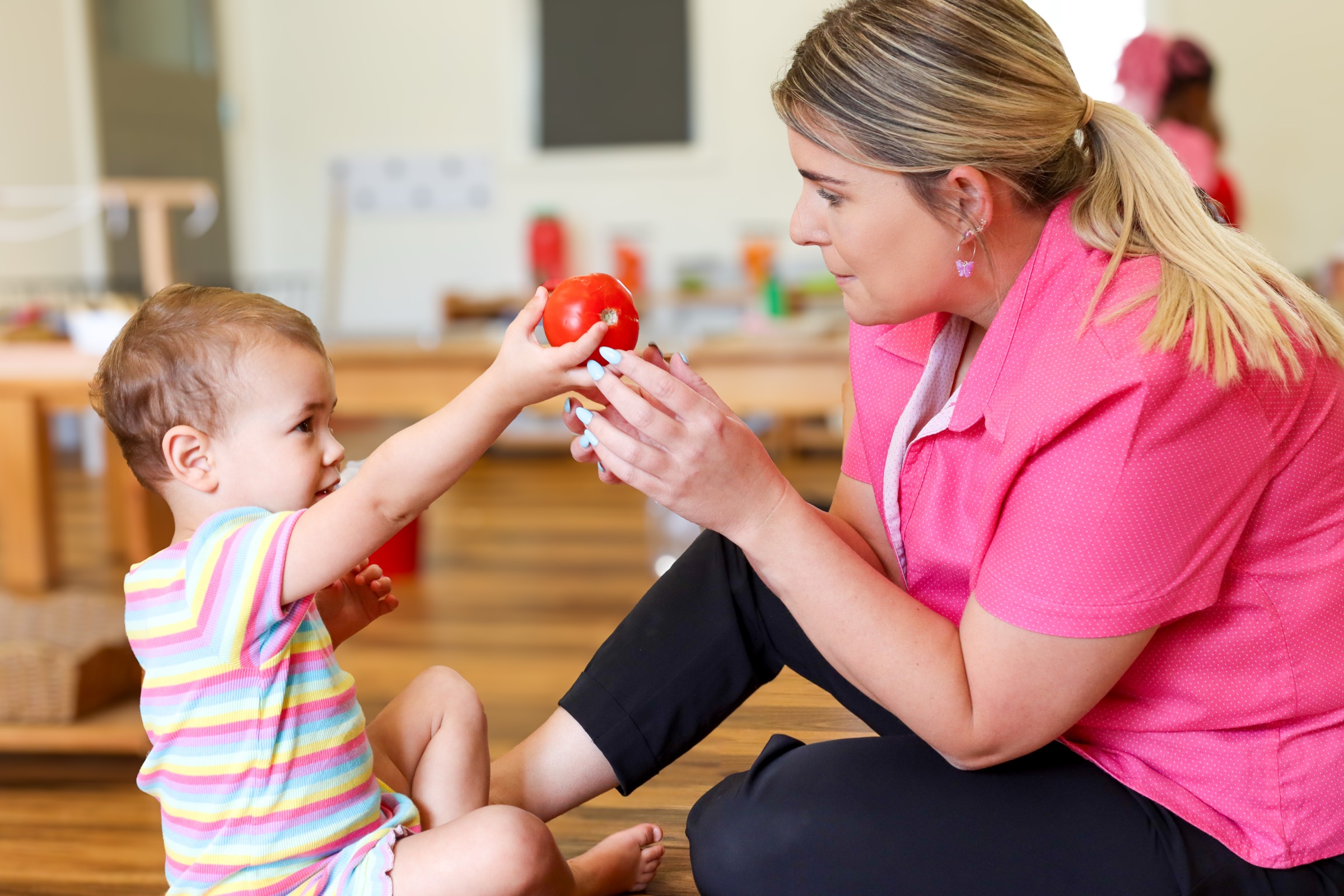
Language activities focus on both vocabulary and conversational skills, including tone, pauses, and expression. Educators model these techniques, encouraging active conversations where children are given time to respond. Language absorption happens naturally through stories, rhymes, singing, and poetry woven into daily routines. Hands-on experiences connect words with objects using real and replica items, matching cards, and contextual images.
The acquisition of language is complex.
For the young child to master the language of his culture he must:
- learn what to say
- how to say it, and
- to whom to say it.
Children in this age group not only take in the words they hear but the way in which a conversation takes place. The to and fro, the pauses, the tones, the expressions, etc. The adults in the environment are very aware of this and ensure that they role model language and conversational techniques both to the children and adults around them. The Educator uses rich, clear and precise language, getting down to the child’s level to show respect for another person. As the child’s vocabulary increases Educators use questioning games and active conversation (where one pauses for the child to respond) to further enrich vocabulary and build the child’s confidence in speech. The child is moving through the linguistic phase of language.
Language is also absorbed rhythmically and so, many opportunities for this are provided in the environment through rhyme, stories, singing, poems and books.
Hands on experiences are provided in the form of real and replica objects for the child to explore and label; objects and cards with an exact picture of the object for the child to directly match, this gives the child the opportunity to see and understand that 3 dimensional objects can be represented in 2 dimensions; objects with cards with a picture of the same item but in a different setting (for example it’s natural habitat), these give the child the opportunity to extract essential qualities and characteristics of an object and its picture and see that it is the same; and cards with real life pictures, which allow the child to learn vocabulary around almost anything that can be photographed.
Our language lessons are brought to the children in a 3-stage process. It is what we call our three-period lesson. For example, we might have a language activity that consists of farm animal figurines. The lesson would travel like this:
- The first stage is called our “This is…” stage. This is where the educator will tell the child the names of the animals. “This is the cow *point*, pig *point* duck *point*”
- The second stage is called our “Show me…” stage. This is where the educator would ask the child to point to a specific animal. “Point to the pig… pick up the duck… pass me the cow…”
- This stage only happens if the child has shown confidence in stage two and has displayed the ability to say a variety of words. It is what we call our “What is…” stage. This is where we ask that the child name the animals. “What’s this?”
All the lessons are given using the Three Period Lesson.
- Naming. “This is a carrot/onion/garlic.” It is a quick step.
- Identifying (experience). This involves touching, feeling/manipulating and smelling the objects. The child may point as adult names the object or pick up, show, give me, touch or feel the object. This is a longer step.
- Recalling. “What’s this?” showing the child an object. This is a quick step.
In an Infant Community we use the first 2 periods as their language is usually not developed enough to do the third period. We have to wait until the child can express themselves back to you and this usually isn’t until 2 ½ -3 years of age.
Linguistic
This occurs from the first intentional word at approximately 12 months until 2 ½ – 3 years.
This is when the language explosion occurs. The child is developing an understanding of word meanings. Then they begin linking the word to its meaning. They start to use verbs (action words) and adverbs (doing words). Adjective (describing words) and using words in the correct order (syntax) start to be used. The child will also use a lot more gestures to give further meaning to their words.
Once a child has learnt about 50 expressive words they will learn approximately 9 words a day.

